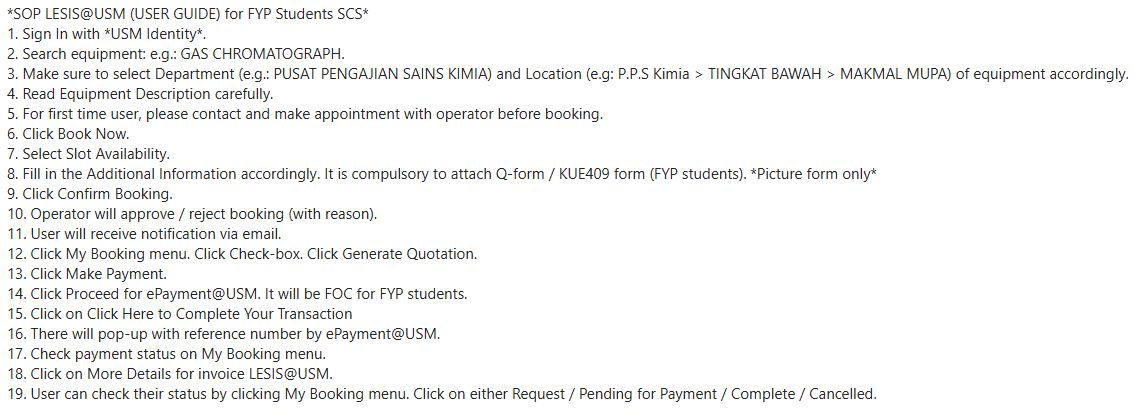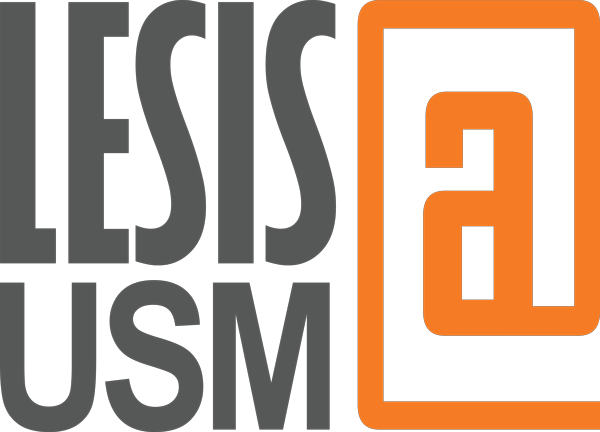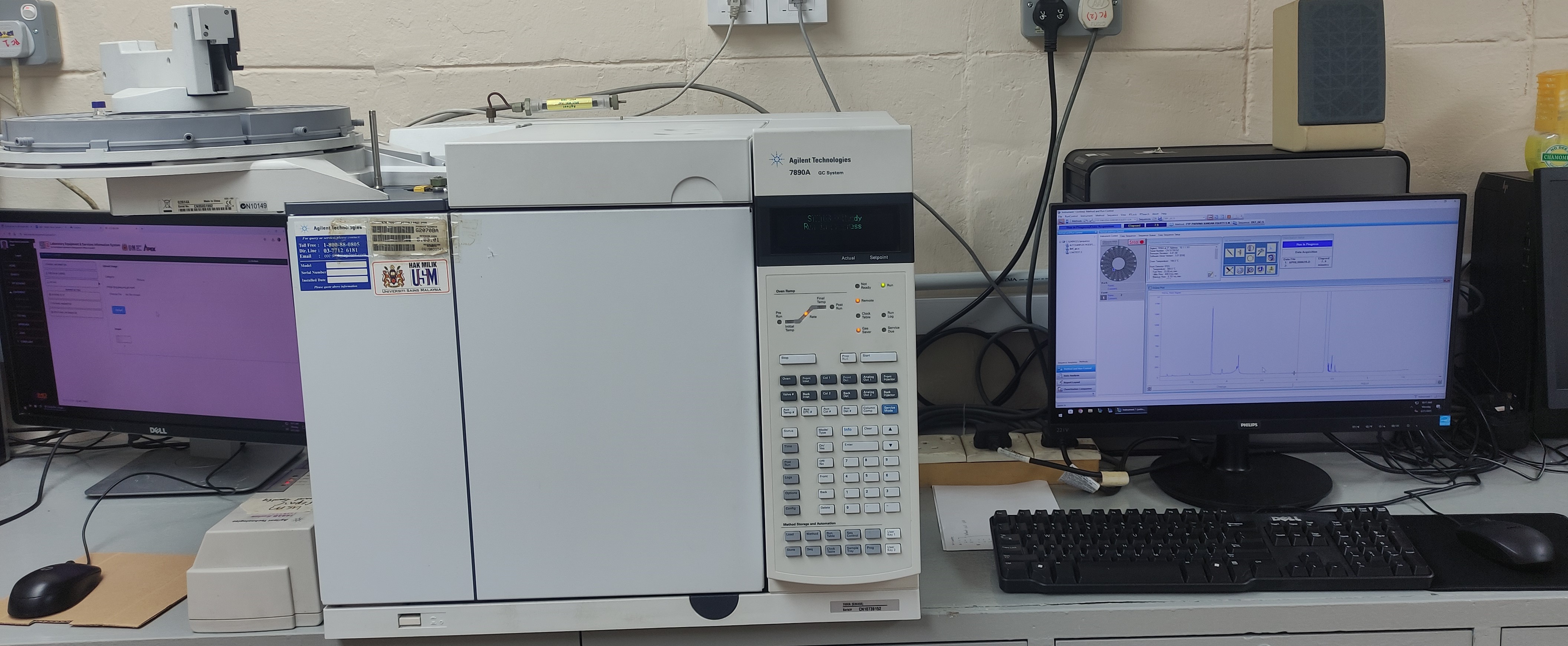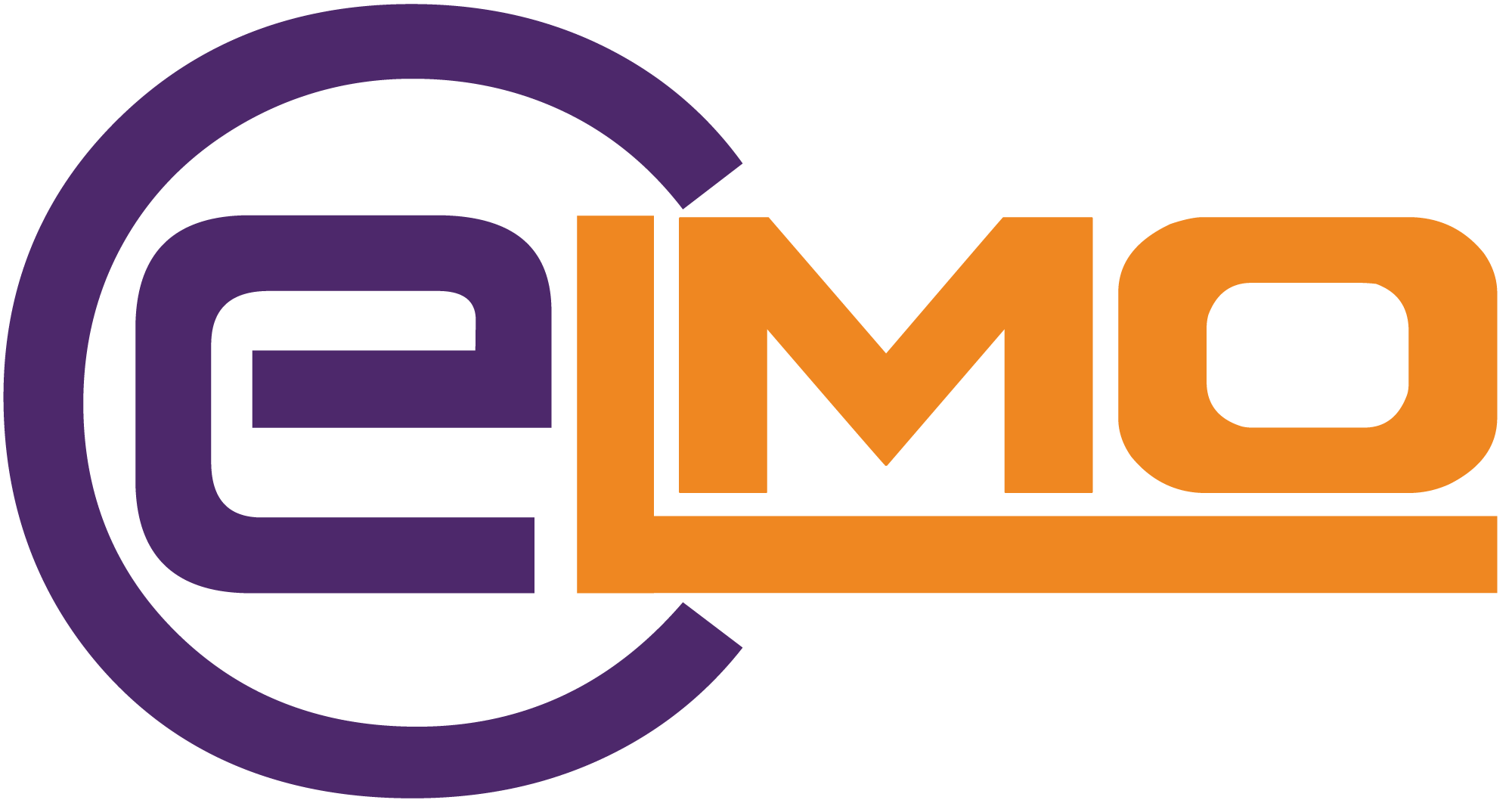


Laboratory Equipment & Services Information System
by Centralized Laboratory Management Office (CeLMO)
EQUIPMENT INFO DETAILS
Description
For GCFID Booking Price, The payment charges are as follows ;
Same department PPSK (USM) : | Other Department (USM) : | IPTA / IPTS / INDUSTRY : |
|---|---|---|
|
|
|
For GCMS Booking Price, The payment charges are as follows ;
Same department PPSK (USM) : | Other Department (USM) : | IPTA / IPTS / INDUSTRY : |
|---|---|---|
|
|
|
##PLEASE USE GOOGLE CHROME TO MAKE A BOOKING REQUEST
GCFID stands for Gas Chromatography-Flame Ionization Detection. It is a technique used in analytical chemistry to separate, identify, and quantify compounds that can be vaporized without decomposition. Here's a brief overview of the process and its components:
Gas Chromatography (GC)
- Principle: GC is a method for separating chemical mixtures based on the volatility and interaction of each component with the stationary phase of the chromatographic column.
- Components:
- Carrier Gas: An inert gas (e.g., helium, nitrogen) that transports the sample through the column.
- Injector: Introduces the sample into the carrier gas stream.
- Column: Contains the stationary phase where separation occurs.
- Oven: Controls the temperature of the column to optimize separation.
Flame Ionization Detection (FID)
- Principle: FID detects compounds by burning them in a flame and measuring the ions produced.
- Components:
- Hydrogen Flame: Burns the sample as it exits the column.
- Collector Electrode: Collects ions generated in the flame.
- Amplifier: Converts ion current to an electrical signal for analysis.
Process
- Sample Introduction: A small amount of the sample is vaporized and carried into the column by the carrier gas.
- Separation: As the sample moves through the column, components interact differently with the stationary phase and separate based on their volatility.
- Detection: Separated components exit the column and enter the FID. They are burned in a hydrogen flame, producing ions.
- Signal Generation: The ions generate a current proportional to the amount of the compound present. This current is measured and recorded as a chromatogram.
Applications
- Environmental Analysis: Detecting pollutants in air, water, and soil.
- Food and Beverage: Analyzing flavors, fragrances, and contaminants.
- Pharmaceuticals: Quality control and purity testing.
- Petrochemicals: Analyzing hydrocarbons in fuels and lubricants.
Advantages
- Sensitivity: High sensitivity for organic compounds.
- Quantitative: Provides quantitative data for the amount of each component.
- Wide Dynamic Range: Can detect components present in very small to very large quantities.
Limitations
- Limited to Volatile Compounds: Only suitable for compounds that can be vaporized without decomposition.
- Destructive Detection: The sample is burned during detection, preventing further analysis.
GCFID is a powerful tool in analytical chemistry, widely used due to its sensitivity, reliability, and versatility in analyzing a wide range of compounds.
Why water Cannot be used in GC? First of all, in a GC our predominant detector, our main detector is the FID, flame ionization detector.The FID cannot detect water. Water does not have any carbon hydrogen bonds so therefore the FID has no ability to see it. HERE IS LINK FOR YOU TO READ.. https://axionlabs.com/chromatography-training/does-water-show-up-in-gas-chromatography/#:~:text=First%20of%20all%2C%20in%20a,no%20ability%20to%20see%20it. |
|---|
Other Info
*Please kindly reach out to the designated contact person for further elaboration and additional information.
Equipment Use
RESEARCH ANALYSIS | TEACHING LAB |
|---|---|
|
|
- Manufacturer
- AGILENT
- Brand
- AGILENT
- Model
- 7890A G3440A
- Year Manufactured
- 2009
- Year Procured
- 2009
- Department
- PUSAT PENGAJIAN SAINS KIMIA
- Location
- P.p.s Kimia > Tingkat Bawah > Makmal Mupa
- Date Registered LESIS
- 19/12/2023
- Category
- Testing Equipment
- Function
- Booking, Testing,
- Category
- Staff operated
- Equipment Status
- Good
Person In-Charge

MEGAT HASNUL ZAMANI BIN ISMAIL


